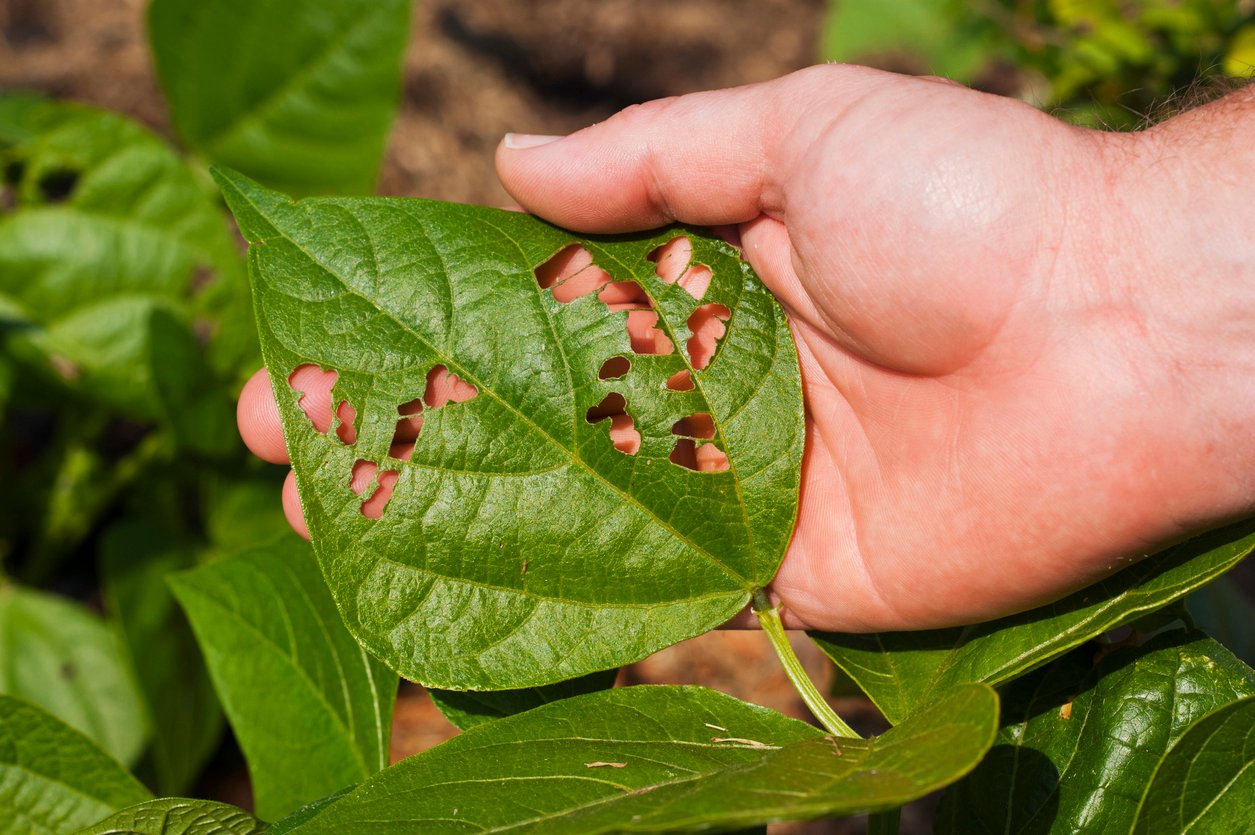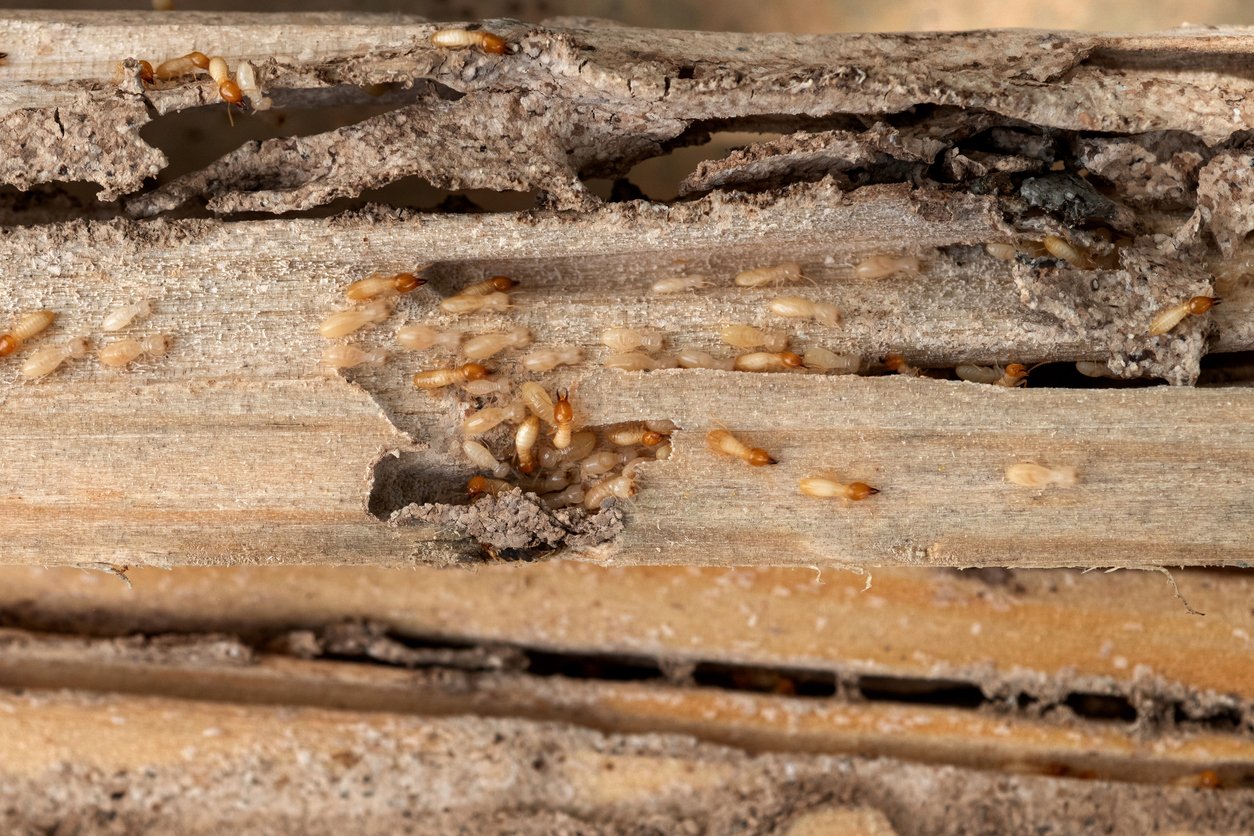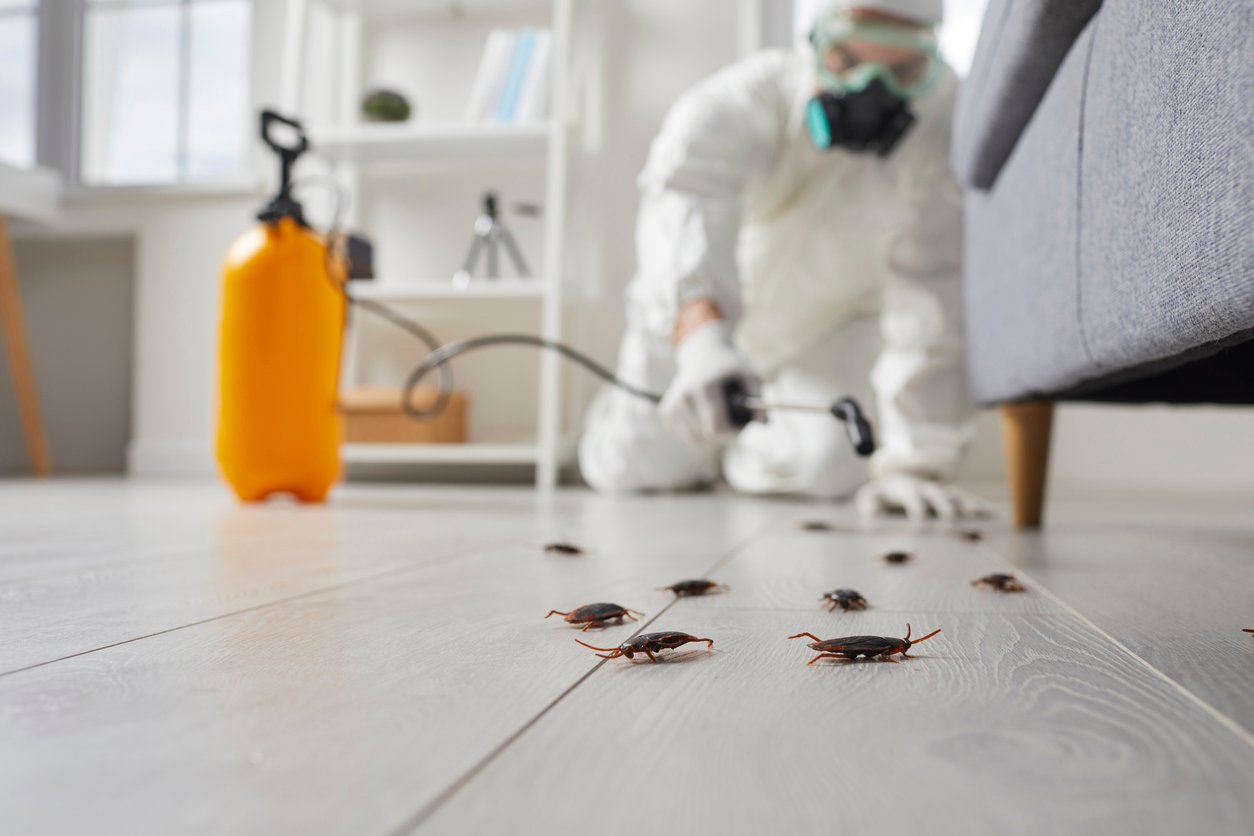What Does A Cicada Killer Nest Look Like?

If you’ve ever stumbled upon a small hole in your yard surrounded by freshly dug dirt, your first thought may have been that voles or some other kind of rodent were responsible. However, small mammals aren’t the only pests that dig outside—you could be looking at a cicada killer nest. These digger wasps are known for building distinctive burrows in the ground.

What are Cicada Killers?
Cicada killers (Sphecius speciosus) are large, solitary wasps that measure almost two inches in length. They typically surface in the summer months and are hard to miss due to their size. They’re characterized by their light-brown wings and stark black abdomen with symmetrical yellow stripes divided down the middle.
Why are they called Cicada Killers?
Adult cicada killers typically feed on nectar and plant matter, but this insect earned its nickname by hunting cicadas (almost exclusively) for their young.
When the female cicada killer attacks a cicada, she uses her stinger to inject a paralytic into her victim—sometimes midair. She then drags her large prey into her underground burrow through a circular opening. Once inside, the cicada killer stores the immobile cicada in a chamber of the nest with a few of her own eggs. When her young hatch a few days later, they have a fresh (live) meal to feast on.

Do Cicada Killers build nests?
Unlike common wasps and yellowjackets that build and fortify nests above ground, cicada killers burrow underground in warm sand and soil to create their nests. Cicada killer nests consist of tunnels burrowed approximately one foot deep into the soil, extending up to 70 inches in length. These tunnels contain multiple chambers used for egg deposition and food storage.
The nest entrance is typically identified by a distinctive hole around ½ inch in diameter.. These holes are usually surrounded by a pile of kicked-up dirt unless the nest has been disturbed by rain or other factors. If you live in an environment conducive to cicada killers, you might see dozens of these nests dotting your lawn.
Where do Cicada Killers build their nests?
Cicada killer nests are most often found in the eastern United States during warmer months. In California and surrounding states, the Sphecius convallis, also known as the Pacific cicada killer or western cicada killer, is also common. This relative has a similar stripe pattern but a light-brownish/reddish abdomen instead of black.
The ideal conditions for a cicada killer nest are dry, warm sand or soil that’s in full sunlight and near trees or shrubs that contain a high cicada population.
What should I do if I find a Cicada Killer nest?
If you happen to find a cicada killer nest in your yard, the first thing to remember is to not attempt to destroy it. By disturbing a cicada killer nest, you risk getting stung by these powerful insects. It also might be tempting to fill in the entrance hole of a cicada killer nest, but this won’t do anything to deter these wasps, and the larvae will remain underground. It’s best to consult a professional pest control company for assistance.
If left unchecked, cicada killer wasps will continue to breed and create dozens of tunnel systems beneath the surface of your yard. While male cicada killers often buzz around and disturb people, female cicada killers actually have the potential to inflict painful stings. The best time of year to mitigate a cicada killer problem is early summer when females are still building their nests and larvae haven’t matured yet.

Do Cicada Killers sting humans?
Like most wasp species, cicada killers will sting humans if threatened or mishandled. Female cicada killers are the ones with a stinger at the point of the abdomen, and you’re most likely to be stung by them if you pick them up or disturb a cicada killer nest on the ground. If you leave them alone, they’ll likely do the same. They aren’t as aggressive as other wasps such as yellowjackets.
Male cicada killers don’t have stingers, but they are actually the ones that are more likely to swarm passersby. This is an intimidation tactic because male cicada killers are very territorial when looking for a mate.
While a cicada killer sting is rare compared to other wasp species, its sting is painful and can cause redness, swelling, welting, and even severe allergic reactions in some.

Do Cicada Killers sting pets?
Keep a close eye on pets if you have cicada killers nearby. Because outdoor pets spend more time in the same area as cicada killers (and may even try to eat this insect occasionally), they are more likely to be stung than humans.
For some animals, a sting in the mouth or around the face will act as a warning, and they’ll avoid those pests in the future. But if your pet has allergies or other health risks, a cicada killer sting could be more problematic. If you notice swelling or redness, call your veterinarian right away.

Get professional pest control for Cicada Killers
The best thing to do if you encounter a cicada killer nest is to call your pest control provider right away. Professionals will be able to treat both inside and around a cicada killer nest to get rid of adults and larvae. The field experts at Moxie Pest Control are ready to help you reclaim your yard from stinging insects such as cicada killers, yellowjackets, and other wasps. Contact us today for a custom consultation for your home.



